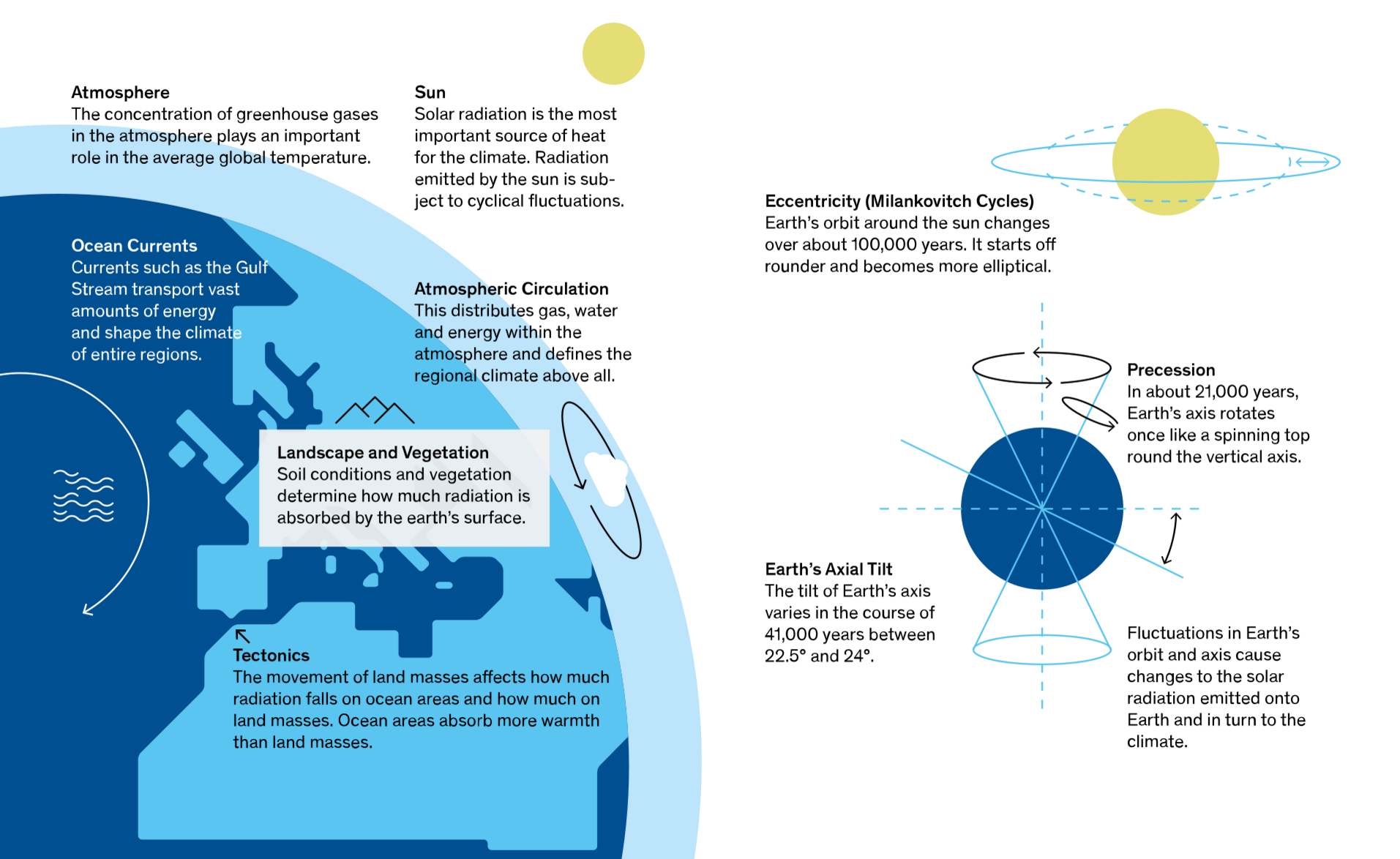Last modification
How can climate change be explained?
Natural cycles in the global climate
The global climate shows more or less pronounced fluctuations, independent of human influences, caused by various natural processes. In general, four different parameters can be named that cause the global climate to fluctuate:
- Changes in incident solar radiation
- Changes in reflected solar radiation
- Changes in thermal radiation emitted into space
- Internal fluctuations of the climate system
Recurring changes in the Earth's orbit can be detected at regular, very large intervals of several tens of thousands of years, whereby high correlations with climatic changes on Earth have been documented. The activity and thus the radiation from the sun reaching the earth also vary. The position of the continents has a direct effect on air and ocean circulation and thus on the global climate. Volcanic eruptions emit large quantities of CO2, probably the best-known greenhouse gas, but also aerosols, volcanic ash and dust particles, which ultimately result in a temporary cooling of the climate over one to two years.

Anthropogenic climate change
The average global surface temperature has risen by 1.04 °C in the last 130 years, an unusually rapid increase. According to the scientific reports of the Intergovernmental Panel on Climate Change (IPCC), the sharp increase in global warming since 1950 in particular can no longer be explained by natural climate fluctuations. It is highly likely that anthropogenic greenhouse gases such as carbon dioxide (CO₂), whiche are caused by human activity, are responsible for climate change. Since industrialisation, these gases have been increasingly released into the atmosphere through the burning of fossil fuels such as coal, oil and natural gas, as well as through large-scale land use, such as the deforestation of tropical rainforests, and increase their greenhouse effect.
Global warming - a chain reaction
Rising air and sea temperatures are gradually reducing the total global snow and ice mass. As a result of this, but also due to the increase in the volume of water with rising temperatures, sea levels are also rising. Global warming also increases the probability of extreme weather events with far-reaching effects on people and the environment.
Sources:
Federal Office of the Environment (UBA)
IPCC 2021, Special Report Global Warming of 1.5º C
FAU Florida Atlantic University
NASA Earth Observatory, 2021
You can find further exciting information on the subject of climate change and climate protection in our climate booklet
